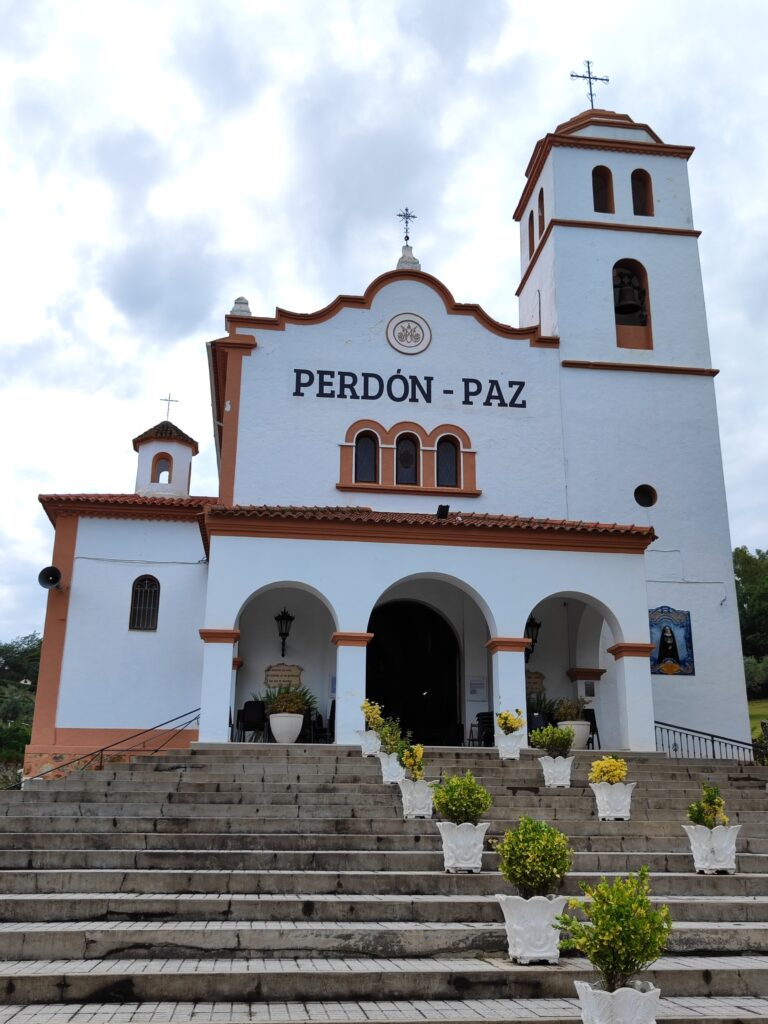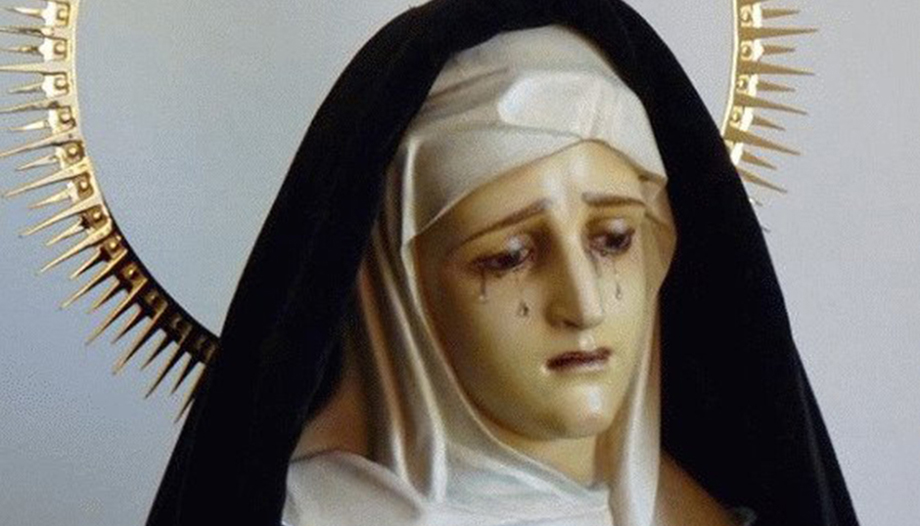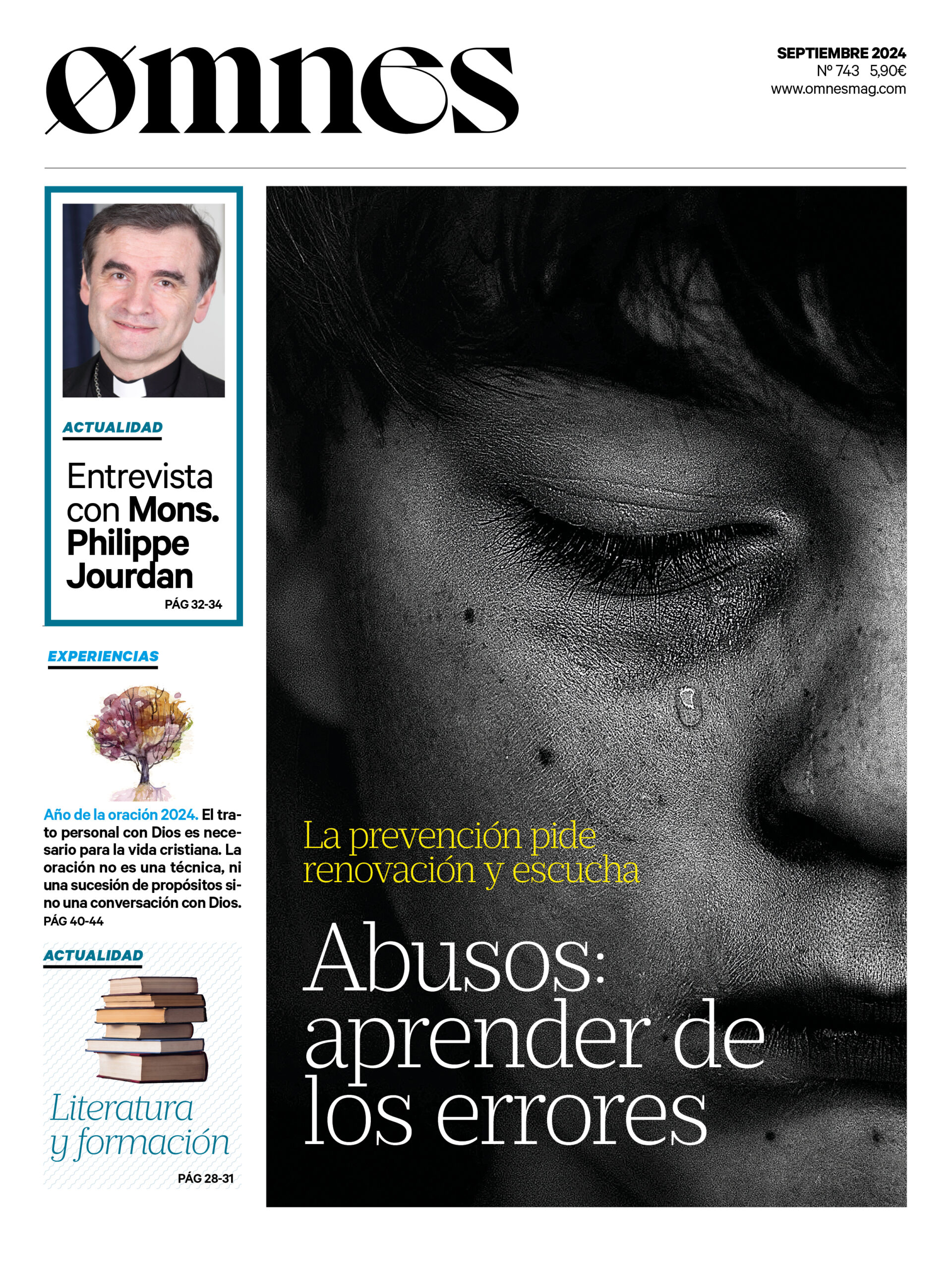On August 22, 2024, the Holy See, through the letter of "A Light in Spain" signed by the Prefect of the Congregation for the Doctrine of the Faith, Bishop Victor Manuel Fernandez, gave the green light to "appreciate the pastoral value and also to promote the dissemination of this spiritual proposal, including through possible pilgrimages to a sacred place" of the Chandavila sanctuarylocated in La Codosera, a border town between the Spanish province of Badajoz and Portugal.
This is one of the first recognitions granted by the Vatican to a sanctuary after the document establishing the Norms for the discernment of alleged supernatural phenomena.
In fact, with this nulla ostaAlthough no certainty is expressed about the supernatural authenticity of the phenomenon, many signs of an action of the Holy Spirit are recognized.
The diocesan bishop of Mérida Badajoz "will proceed to the declaration of the proposed "nihil obstat", so that the Chandavila sanctuaryHeir to a rich history of simplicity, of few words and much devotion, continue to offer to the faithful who wish to approach, a place of inner peace, consolation and conversion", as Cardinal Fernandez's letter points out.
The devotion to the Virgin of Sorrows of Chandavila in Extremadura and most of the Portuguese border towns is very deep and profound.
Omnes was able to talk with the priest Mateo Blanco, who was vicar general of the archdiocese of Extremadura and collaborator in the writing of "Chandavila aquello... sucedió", the book of the priest Francisco Barroso who was a first hand witness of some of the apparitions of the Virgin and who died a short time ago.
Chandavila appearances
In 1945, two girls, Marcelina Barroso Expósito, ten years old, and Afra Brígido Blanco, seventeen, claimed to be witnesses to apparitions in the Chandavila areabelonging to the town of La Codosera.
The first one, Marcalina, saw the Virgin, in her Dolorosa invocation on the branches of a chestnut tree while Afra saw the Cross of the Lord, both in the place where today there is a small chapel, from May 1945.
– Supernatural history of apparitions is narrated in several places, although both visionaries were always very discreet when referring to these facts and have always maintained the same statements and narratives.
"Forgiveness is the first message of Chandavila".
"You have to know the context of the apparitions of the Virgin in Chandavila," Mateo Blanco emphasizes. "It was the year 1945. In Spain, in the towns and families, especially in small towns, as in this case, were divided. They had suffered the painful disaster of the Civil War and the families were divided, the towns were divided: some on one side and others on the other. As a result, an atmosphere of absolute distrust reigned. A balm was needed and Our Lady came to bring that balm. I think this is the first point of Chandavila's message: forgiveness.
The seer girl herself, Marcelina, lived this division in her family: "Marcelina's father had been killed at the end of the war because her father (the girl's grandfather) had been mayor of the town at the time of the Republic. He was a very good man who, when all the fights started, warned the village priest who was able to save his life thanks to him. However, at the end of the war, they killed the son of this mayor, that is, Marcelina's father, when she was 3 or 4 years old, and her mother was pregnant with his brother".
These terrible events caused Marcelina to live a frontal opposition at home to the Church, which identified itself with "the winning side". She, however, liked to go to the parish and pray. She did it almost in secret because, as Mateo Blanco explains, "her mother scolded her. She was a woman with a broken heart, who had to work in the houses, to get some money to support her children. And also, something typical of border towns, she did some smuggling".
For this priest, it is key that "what Our Mother gives to Marcelina in her encounters is affection. She has details of affection with the little girl, who tells it in her own way, with the simplicity of her 10 years of age. Marcelina tells that she approached the Virgin and embraced her, that she felt the warmth of the Virgin, and how she brushed her veil".
On June 4, 1945, Our Lady told Marcelina in the morning to return at three o'clock in the afternoon. Together with the little girl, there were an estimated 6,000 or 7,000 people. That was a lot more than there were in the village. Because word spread and they came not only from the village, but from neighboring villages and also from Portuguese villages, which are also closely linked to Chandavila. That day the most evocative scene, the most beautiful of the apparitions of Chandavila takes place when the Virgin calls Marcelina and she is walking on her knees on a disastrous road, full of "hedgehogs", those shells of chestnuts, and it is also a terrain with some striated rocks that cut. The logical thing is that she would have come out with broken legs. The girl went to the Virgin and then the Virgin asked her, "Do you want to come with me? And Marcelina replied, "Yes, Madam". The Virgin told her that she could go back, without taking her eyes off the Virgin, and when she arrived where her mother was, when she saw that her daughter had not even a scratch, she began to shout, "I forgive you! This was heard by all who were there. Francisco Barroso always put a lot of emphasis on this "I forgive".
The former vicar general of the archdiocese of Extremadura emphasizes that this "I forgive" summarizes the first message of the Virgin. After this conversation with the Virgin and the event of the intact knees, Marcelina had several more visions. "The Virgin asked Marcelina to celebrate a mass in reparation a month there, next to the chestnut tree where she appeared and to build a hermitage for people to go and pray. And that is how it has been," says Mateo Blanco.
The appearances and stigmata of Afra Brígido
People immediately began to pray there, next to the chestnut tree where the Virgin had appeared. A small chapel was built which is still standing and in which a piece of the chestnut tree is kept. Marcelina went to live in a farmhouse and then she attended a school in Villafranca de los Barros and, after a few years, she entered the Congregation of the Sisters of the Cross. She has hardly spoken of these apparitions, but she has always maintained, firmly, in their veracity and of her conversations with the Virgin.
Mateo Blanco recalls a visit he had the opportunity to make to the visionary, who is still alive, in the convent where she resides. In this meeting were the then Archbishop of Merida Badajoz, Monsignor Celso Morga, Blanco himself and some other people. It was "one of the greatest gifts I have had in recent years," said Blanco, "we were talking with her. Her humility was surprising. At one point during the conversation, the bishop asked her about the apparitions and she answered: "I have never lied". For her "the most important grace is to have received from the Lord the vocation to devotion in the Sisters of the Cross and that the Lord has given her the grace to be faithful".
Afra Brígido, the other visionary, was 17 years old when the Virgin appeared to her. She was quite skeptical about everything that was happening in the town as a result of the apparition to Marcelina. One of her brothers was at Marcelina's apparition and told her that there was something going on and encouraged her to go, but Afra laughed at him saying that what was happening there was that they were having visions because of the hunger they were going through.


At the end she went with some friends and at a certain moment she had an ecstasy and the Lord on the Cross. Afra always saw the cross, which is the other message of Chandavila. Forgiveness and the Cross of the Lord. From that moment on, Afra radically changed his life. He began to go to Mass every day, to go frequently to the sacraments... and so on throughout his life. Shortly afterwards, she went with some friends on a pilgrimage to Villa del Rey, a small village near La Codosera. There they went to see the priest, who had previously been in La Codosera, and to visit the Virgen de las Riberas, a hermitage near the Zapatón River. While praying the Stations of the Cross there, at one of the stations, Afra fell and remained in ecstasy for a few minutes. That same night, she began to feel pains in her hands, feet and side.
From that moment on he had the stigmata until the end of his life. In Chandavila, some gauze she used to cover the stigmata on her hands, because they bled. Afra dedicated her whole life to caring for others: first for her mother and then, after her mother's death, in Madrid, she cared for many people. Unlike Marcelina, who never returned to Chandavila after her profession as a nun, Afra was able to return on occasion, before her death, to the place where the Virgin Mary appeared to her.
Place of simple devotion
Mateo Blanco emphasizes that the characteristics of Chandavila have been piety, devotion and above all simplicity, "of these things I am a witness. I believe that this has also attracted attention in Rome: that Chandavila has remained as simple as it was 50 or 60 years ago. It is a place to pray, a place where one can pray at ease, no matter how hot or cold it is. Some say they have a microclimate, because it's always nice in Chandavila".
Every Friday of Sorrows is an important date in this sanctuary in Extremadura. On that day the Way of the Cross is prayed around the Sanctuary and many people come to the sacrament of Reconciliation. In 2020, the then Archbishop of Mérida Badajoz, Msgr. Celso Morga asked the Holy See to grant a Jubilee Year for Chandavila on the occasion of the 75th anniversary of the apparitions and then wrote a pastoral letter on devotion to the Virgin. A holy year, which was granted and which "helped many people to come closer to the Lord" as Mateo Blanco points out.
Jenaro Lázaro, the sculptor in love with the Virgin Mary
The carving of the Virgen de los Dolores that can be seen in Chandavila is the work of the sculptor Jenaro Lázaro. The life of this sculptor, of Zaragozano origin and who knew in his youth the founder of the Opus Dei is intimately linked to Chandavila. Jenaro learned about the history of Chandavila through some acquaintances and, in 1945, shortly after the apparitions, he went to visit the hermitage. He was so deeply impressed by Chandavila that he moved there.
He made the image of the Virgen de los Dolores that presides over the sanctuary of Chandavila, promoted the construction of the sanctuary and set up a school-workshop for the young people of the village. He bought an old castle in which he set up his studio. From there he went daily to the shrine praying the Rosary. "He loved the Virgin very much and the Virgin took him on September 15, the day of Our Lady of Sorrows".
Chandavila's future
With the nulla osta The Archbishop of Merida Badajoz has not only the permission but also the blessing to promote the devotion to Our Lady of Sorrows of Chandavila and to spread her message.
A decision that has put the Extremaduran town of La Codosera and the history of the Virgen de los Dolores on the map. Mateo Blanco hopes that Chandavila will continue to be what it is, a place of prayer where people meet God and his Blessed Mother".












